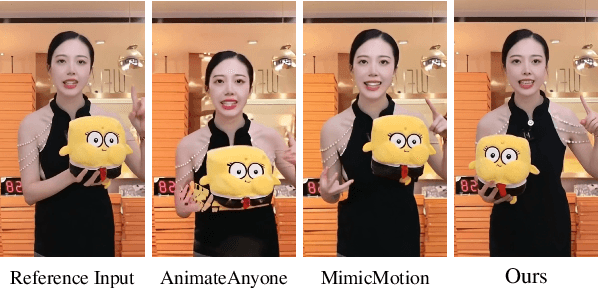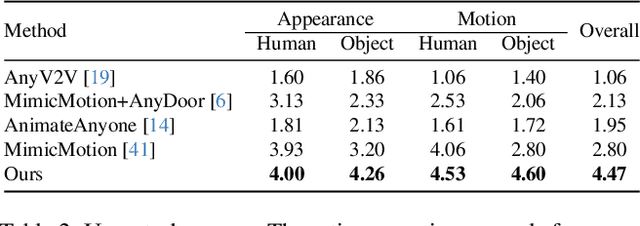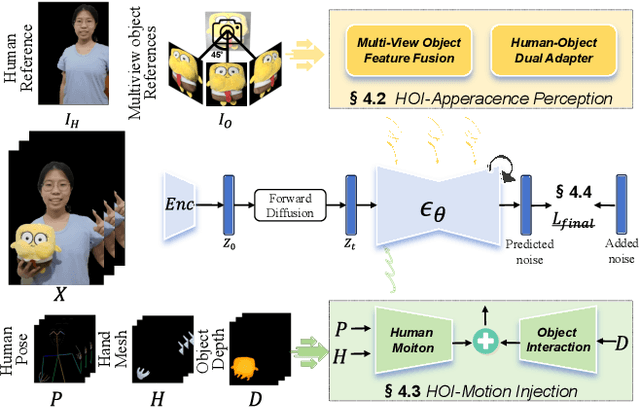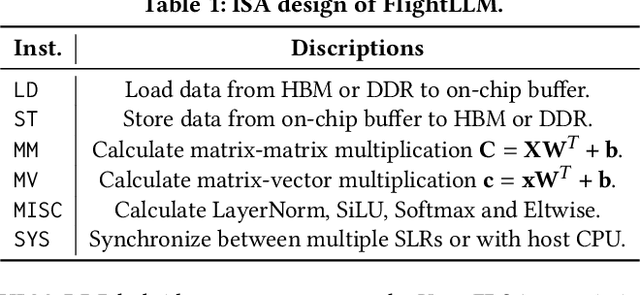Jintao Li
CMEdataset Advancing China Map Detection and Standardization with Digital Image Resources
Apr 10, 2025Abstract:Digital images of Chinas maps play a crucial role in map detection, particularly in ensuring national sovereignty, territorial integrity, and map compliance. However, there is currently no publicly available dataset specifically dedicated to problematic maps the CME dataset. Existing datasets primarily focus on general map data and are insufficient for effectively identifying complex issues such as national boundary misrepresentations, missing elements, and blurred boundaries. Therefore, this study creates a Problematic Map dataset that covers five key problem areas, aiming to provide diverse samples for problematic map detection technologies, support high-precision map compliance detection, and enhance map data quality and timeliness. This dataset not only provides essential resources for map compliance, national security monitoring, and map updates, but also fosters innovation and application of related technologies.
AnchorCrafter: Animate CyberAnchors Saling Your Products via Human-Object Interacting Video Generation
Nov 26, 2024



Abstract:The automatic generation of anchor-style product promotion videos presents promising opportunities in online commerce, advertising, and consumer engagement. However, this remains a challenging task despite significant advancements in pose-guided human video generation. In addressing this challenge, we identify the integration of human-object interactions (HOI) into pose-guided human video generation as a core issue. To this end, we introduce AnchorCrafter, a novel diffusion-based system designed to generate 2D videos featuring a target human and a customized object, achieving high visual fidelity and controllable interactions. Specifically, we propose two key innovations: the HOI-appearance perception, which enhances object appearance recognition from arbitrary multi-view perspectives and disentangles object and human appearance, and the HOI-motion injection, which enables complex human-object interactions by overcoming challenges in object trajectory conditioning and inter-occlusion management. Additionally, we introduce the HOI-region reweighting loss, a training objective that enhances the learning of object details. Extensive experiments demonstrate that our proposed system outperforms existing methods in preserving object appearance and shape awareness, while simultaneously maintaining consistency in human appearance and motion. Project page: https://cangcz.github.io/Anchor-Crafter/
HeadRouter: A Training-free Image Editing Framework for MM-DiTs by Adaptively Routing Attention Heads
Nov 22, 2024



Abstract:Diffusion Transformers (DiTs) have exhibited robust capabilities in image generation tasks. However, accurate text-guided image editing for multimodal DiTs (MM-DiTs) still poses a significant challenge. Unlike UNet-based structures that could utilize self/cross-attention maps for semantic editing, MM-DiTs inherently lack support for explicit and consistent incorporated text guidance, resulting in semantic misalignment between the edited results and texts. In this study, we disclose the sensitivity of different attention heads to different image semantics within MM-DiTs and introduce HeadRouter, a training-free image editing framework that edits the source image by adaptively routing the text guidance to different attention heads in MM-DiTs. Furthermore, we present a dual-token refinement module to refine text/image token representations for precise semantic guidance and accurate region expression. Experimental results on multiple benchmarks demonstrate HeadRouter's performance in terms of editing fidelity and image quality.
FakingRecipe: Detecting Fake News on Short Video Platforms from the Perspective of Creative Process
Jul 23, 2024Abstract:As short-form video-sharing platforms become a significant channel for news consumption, fake news in short videos has emerged as a serious threat in the online information ecosystem, making developing detection methods for this new scenario an urgent need. Compared with that in text and image formats, fake news on short video platforms contains rich but heterogeneous information in various modalities, posing a challenge to effective feature utilization. Unlike existing works mostly focusing on analyzing what is presented, we introduce a novel perspective that considers how it might be created. Through the lens of the creative process behind news video production, our empirical analysis uncovers the unique characteristics of fake news videos in material selection and editing. Based on the obtained insights, we design FakingRecipe, a creative process-aware model for detecting fake news short videos. It captures the fake news preferences in material selection from sentimental and semantic aspects and considers the traits of material editing from spatial and temporal aspects. To improve evaluation comprehensiveness, we first construct FakeTT, an English dataset for this task, and conduct experiments on both FakeTT and the existing Chinese FakeSV dataset. The results show FakingRecipe's superiority in detecting fake news on short video platforms.
Let Silence Speak: Enhancing Fake News Detection with Generated Comments from Large Language Models
May 26, 2024



Abstract:Fake news detection plays a crucial role in protecting social media users and maintaining a healthy news ecosystem. Among existing works, comment-based fake news detection methods are empirically shown as promising because comments could reflect users' opinions, stances, and emotions and deepen models' understanding of fake news. Unfortunately, due to exposure bias and users' different willingness to comment, it is not easy to obtain diverse comments in reality, especially for early detection scenarios. Without obtaining the comments from the ``silent'' users, the perceived opinions may be incomplete, subsequently affecting news veracity judgment. In this paper, we explore the possibility of finding an alternative source of comments to guarantee the availability of diverse comments, especially those from silent users. Specifically, we propose to adopt large language models (LLMs) as a user simulator and comment generator, and design GenFEND, a generated feedback-enhanced detection framework, which generates comments by prompting LLMs with diverse user profiles and aggregating generated comments from multiple subpopulation groups. Experiments demonstrate the effectiveness of GenFEND and further analysis shows that the generated comments cover more diverse users and could even be more effective than actual comments.
Break-for-Make: Modular Low-Rank Adaptations for Composable Content-Style Customization
Mar 31, 2024



Abstract:Personalized generation paradigms empower designers to customize visual intellectual properties with the help of textual descriptions by tuning or adapting pre-trained text-to-image models on a few images. Recent works explore approaches for concurrently customizing both content and detailed visual style appearance. However, these existing approaches often generate images where the content and style are entangled. In this study, we reconsider the customization of content and style concepts from the perspective of parameter space construction. Unlike existing methods that utilize a shared parameter space for content and style, we propose a learning framework that separates the parameter space to facilitate individual learning of content and style, thereby enabling disentangled content and style. To achieve this goal, we introduce "partly learnable projection" (PLP) matrices to separate the original adapters into divided sub-parameter spaces. We propose "break-for-make" customization learning pipeline based on PLP, which is simple yet effective. We break the original adapters into "up projection" and "down projection", train content and style PLPs individually with the guidance of corresponding textual prompts in the separate adapters, and maintain generalization by employing a multi-correspondence projection learning strategy. Based on the adapters broken apart for separate training content and style, we then make the entity parameter space by reconstructing the content and style PLPs matrices, followed by fine-tuning the combined adapter to generate the target object with the desired appearance. Experiments on various styles, including textures, materials, and artistic style, show that our method outperforms state-of-the-art single/multiple concept learning pipelines in terms of content-style-prompt alignment.
U-VAP: User-specified Visual Appearance Personalization via Decoupled Self Augmentation
Mar 29, 2024



Abstract:Concept personalization methods enable large text-to-image models to learn specific subjects (e.g., objects/poses/3D models) and synthesize renditions in new contexts. Given that the image references are highly biased towards visual attributes, state-of-the-art personalization models tend to overfit the whole subject and cannot disentangle visual characteristics in pixel space. In this study, we proposed a more challenging setting, namely fine-grained visual appearance personalization. Different from existing methods, we allow users to provide a sentence describing the desired attributes. A novel decoupled self-augmentation strategy is proposed to generate target-related and non-target samples to learn user-specified visual attributes. These augmented data allow for refining the model's understanding of the target attribute while mitigating the impact of unrelated attributes. At the inference stage, adjustments are conducted on semantic space through the learned target and non-target embeddings to further enhance the disentanglement of target attributes. Extensive experiments on various kinds of visual attributes with SOTA personalization methods show the ability of the proposed method to mimic target visual appearance in novel contexts, thus improving the controllability and flexibility of personalization.
Make-Your-Anchor: A Diffusion-based 2D Avatar Generation Framework
Mar 25, 2024



Abstract:Despite the remarkable process of talking-head-based avatar-creating solutions, directly generating anchor-style videos with full-body motions remains challenging. In this study, we propose Make-Your-Anchor, a novel system necessitating only a one-minute video clip of an individual for training, subsequently enabling the automatic generation of anchor-style videos with precise torso and hand movements. Specifically, we finetune a proposed structure-guided diffusion model on input video to render 3D mesh conditions into human appearances. We adopt a two-stage training strategy for the diffusion model, effectively binding movements with specific appearances. To produce arbitrary long temporal video, we extend the 2D U-Net in the frame-wise diffusion model to a 3D style without additional training cost, and a simple yet effective batch-overlapped temporal denoising module is proposed to bypass the constraints on video length during inference. Finally, a novel identity-specific face enhancement module is introduced to improve the visual quality of facial regions in the output videos. Comparative experiments demonstrate the effectiveness and superiority of the system in terms of visual quality, temporal coherence, and identity preservation, outperforming SOTA diffusion/non-diffusion methods. Project page: \url{https://github.com/ICTMCG/Make-Your-Anchor}.
FlightLLM: Efficient Large Language Model Inference with a Complete Mapping Flow on FPGAs
Jan 09, 2024



Abstract:Transformer-based Large Language Models (LLMs) have made a significant impact on various domains. However, LLMs' efficiency suffers from both heavy computation and memory overheads. Compression techniques like sparsification and quantization are commonly used to mitigate the gap between LLM's computation/memory overheads and hardware capacity. However, existing GPU and transformer-based accelerators cannot efficiently process compressed LLMs, due to the following unresolved challenges: low computational efficiency, underutilized memory bandwidth, and large compilation overheads. This paper proposes FlightLLM, enabling efficient LLMs inference with a complete mapping flow on FPGAs. In FlightLLM, we highlight an innovative solution that the computation and memory overhead of LLMs can be solved by utilizing FPGA-specific resources (e.g., DSP48 and heterogeneous memory hierarchy). We propose a configurable sparse DSP chain to support different sparsity patterns with high computation efficiency. Second, we propose an always-on-chip decode scheme to boost memory bandwidth with mixed-precision support. Finally, to make FlightLLM available for real-world LLMs, we propose a length adaptive compilation method to reduce the compilation overhead. Implemented on the Xilinx Alveo U280 FPGA, FlightLLM achieves 6.0$\times$ higher energy efficiency and 1.8$\times$ better cost efficiency against commercial GPUs (e.g., NVIDIA V100S) on modern LLMs (e.g., LLaMA2-7B) using vLLM and SmoothQuant under the batch size of one. FlightLLM beats NVIDIA A100 GPU with 1.2$\times$ higher throughput using the latest Versal VHK158 FPGA.
Exploiting User Comments for Early Detection of Fake News Prior to Users' Commenting
Oct 16, 2023



Abstract:Both accuracy and timeliness are key factors in detecting fake news on social media. However, most existing methods encounter an accuracy-timeliness dilemma: Content-only methods guarantee timeliness but perform moderately because of limited available information, while social context-based ones generally perform better but inevitably lead to latency because of social context accumulation needs. To break such a dilemma, a feasible but not well-studied solution is to leverage social contexts (e.g., comments) from historical news for training a detection model and apply it to newly emerging news without social contexts. This requires the model to (1) sufficiently learn helpful knowledge from social contexts, and (2) be well compatible with situations that social contexts are available or not. To achieve this goal, we propose to absorb and parameterize useful knowledge from comments in historical news and then inject it into a content-only detection model. Specifically, we design the Comments Assisted Fake News Detection method (CAS-FEND), which transfers useful knowledge from a comments-aware teacher model to a content-only student model during training. The student model is further used to detect newly emerging fake news. Experiments show that the CAS-FEND student model outperforms all content-only methods and even those with 1/4 comments as inputs, demonstrating its superiority for early detection.
 Add to Chrome
Add to Chrome Add to Firefox
Add to Firefox Add to Edge
Add to Edge